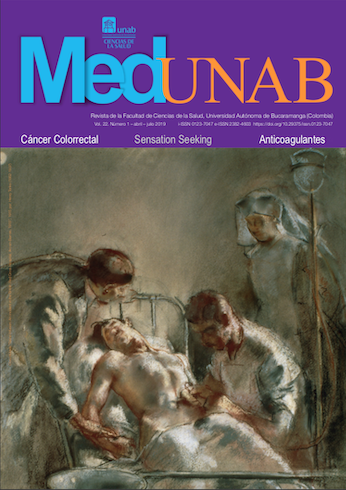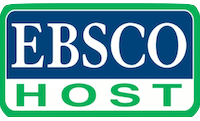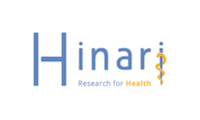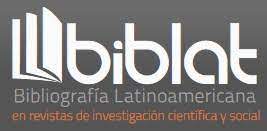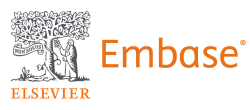Manejo práctico de los nuevos anticoagulantes orales en fibrilación auricular no valvular
Resumen
Introducción. La fibrilación auricular es la arritmia más frecuente en la práctica
clínica, cuya incidencia viene en ascenso alcanzando el 8 % en edades que superan
los 80 años, con un impacto importante en la morbimortalidad relacionado con
las complicaciones cerebrovasculares. El objetivo es identificar los aspectos
farmacológicos y de manejo práctico de los nuevos anticoagulantes orales en
paciente con fibrilación auricular no valvular.
División de los temas tratados. Se realizó una revisión bibliográfica no sistemática
en bases de datos y bibliotecas electrónicas (PubMed, Cochrane, Lilacs) incluyendo
artículos desde 2008 hasta 2019, en idioma inglés y español que contuvieran los
tópicos de interés. Se realizó una descripción detallada de las generalidades de los
anticoagulantes orales en fibrilación auricular, incluyendo dabigatrán, rivaroxabán,
apixabán y edoxabán; monitorización de la actividad anticoagulante; descripción
del manejo perioperatorio de los nuevos anticoagulantes orales y reversión de la
anticoagulación para los nuevos anticoagulantes orales.
Conclusiones. El uso de nuevos anticoagulantes orales en paciente con fibrilación
auricular no valvular es una buena alternativa, con facilidad de administración oral,
sin aumento significativo del riesgo de sangrado, comparado con warfarina, con la
ventaja de no requerir monitoría continua con paraclínicos.
Referencias bibliográficas
Deshpande S, Catanzaro J , Wann S. Atrial fibrillation prevalence and scope of the problem. Cardiac Electrophysiology Clinics. 2014; 6 (1):1 - 4. doi: 10.1016/j. ccep.2013.10.006
Renoux C, Patenaude V , Suissa S. Incidence, mortality, and sex differences of non-valvular atrial fibrillation: A population-based study. Journal of the American Heart Association. 2014; 3 (6):1 - 8. doi: 10.1161/ JAHA.114.001402
Mulpuru S, Rabinstein A, Asirvatham S. Atrial fibrillation and stroke a neurologic perspective. Cardiac Electrophysiology Clinics 2014; 6(1):31 - 41. doi: 10.1016/j.ccep.2013.11.001
Castellano JM, Chinitz J, Willner J, Fuster V. Mechanisms of stroke in atrial fibrillation. Cardiac Electrophysiology Clinics. 2014; 6(1):5 - 15. doi: 10.1016/j. ccep.2013.10.007.
January CT, Wann LS, Alpert JS, Calkins H, Cigarroa JE, Cleveland JC, et al. 2014 AHA/ACC/HRS Guideline for the management of patients with atrial fibrillation: A report of the American College of cardiology/American heart association task force on practice guidelines and the heart rhythm society. Circulation. 2014; 130(23)201 -267. doi: 10.1161/ CIR.0000000000000041
Kirchhof P, Benussi S, Kotecha D, Ahlsson A, Atar D, Casadei B, et al. 2016 ESC Guidelines for the management of atrial fibrillation developed in collaboration with EACTS. European Heart Journal. 2016; 37(38):2893 - 2962. doi: 10.1093/eurheartj/ehw210
Harter K, Levine M, Henderson S. O. Anticoagulation drug therapy: a review. The Western Journal of Emergency Medicine. 2015; 16(1):11 - 7. doi: 10.5811/ westjem.2014.12.22933
Tatjana S, Gregory Y. Novel oral anticoagulants in non-valvular atrial fibrillation. Cardiovascular. Hematological Agents in Medicinal Chemistry. 2014 ; 26 (2) :115 - 129. doi: 10.1016/j.beha.2013.07.008
Cove C, Hylek E. An updated review of target-specific oral anticoagulants used in stroke prevention in atrial fibrillation, venous thromboembolic disease, and acute coronary syndromes. Journal of the American Heart Association. 2013; 2(5):115 - 219. doi: 10.1161/ JAHA.113.000136
Connolly S, Ezekowitz M, Yusuf S, Eikelboom J, Oldgren J, Parekh A, et al. Dabigatran versus warfarin in patients with atrial fibrillation. The New England Journal of Medicine. 2009; 361(12):1139 - 1151. doi: 10.1056/NEJMoa0905561
Hinojar R, Jiménez-Natcher J, Fernández-Golfín C, Zamorano J. New oral anticoagulants: a practical guide for physicians. European Heart Journal - Cardiovascular Pharmacotherapy. 2015; 1(2):134 - 145. doi: 10.1093/ehjcvp/pvv002
Ferns S, Naccarelli G. New Oral Anticoagulants. Their Role in Stroke Prevention in High-Risk Patients with Atrial Fibrillation. Medical Clinics of North America. 2015; 99(4):759 - 80. doi: 10.1016/j. mcna.2015.02.006
Shafeeq H , Tran T. New oral anticoagulants for atrial fibrillation: are they worth the risk? P&T : A Peer-Reviewed Journal for Formulary Management. [Internet]. 2014.[citado el 03 de Junio del 2019]; 39(1):54 - 64. Recuperado a partir de: https://www.ncbi.nlm. nih.gov/pmc/articles/PMC3956385/
Patel MR, Mahaffey KW, Garg J, Pan G, Singer DE, Hacke W, et al. Rivaroxaban versus warfarin in nonvalvular atrial fibrillation. The New England Journal of Medicine. 2011; 365(10):883-91. doi: 10.1056/NEJMoa1009638
López-Sendón J, Merino J. Resultados e implicaciones del estudio ROCKET. Revista Española de Cardiología Suplementos. 2013; 13(C):42 - 46. doi: 10.1016/S1131-3587(13)70058-X
Mekaj Y, Mekaj A, Duci S, Miftari E. New oral anticoagulants: Their advantages and disadvantages compared with vitamin K antagonists in the prevention and treatment of patients with thromboembolic events. Therapeutics and Clinical Risk Management. 2015(11):967 - 977. doi: 10.2147/TCRM.S84210
Shamoun F, Obeid H, Ramakrishna H. Novel anticoagulants in atrial fibrillation: Monitoring, reversal and perioperative management. BioMed Research International. 2015; 424031. doi: 10.1155/2015/424031
Steinberg B, Piccini, J. Anticoagulation in atrial fibrillation. British Medical Journal. 2014; 14(348) 2116. doi: 10.1136/bmj.g2116
Martínez-Rubio A, Martínez-Torrecilla R. Evidencias actuales de los nuevos anticoagulantes orales en el tratamiento de la fibrilación auricular no valvular: comparación de subestudios. Revista Espanola de Cardiologia. 2015; 68(3):185 - 189. doi: 10.1016/j. recesp.2014.07.017
Mateo J. Nuevos anticoagulantes orales y su papel en la práctica clínica. Revista Española de Cardiología Suplementos. 2013; 13(1 SUPPL.3) 33 - 41. doi: 10.1016/S1131-3587(13)70057-8
Hanley C, Kowey P. Are the novel anticoagulants better than warfarin for patients with atrial fibrillation?. Journal of Thoracic Disease. 2015; 7(2):165 - 171. doi: 10.3978/j.issn.2072-1439.2015.01.23
Heidbuchel H, Verhamme P, Alings M, Antz M, Hacke W, Oldgren J, et al. Updated European Heart Rhythm Association Practical Guide on the use of non-Vitamin K antagonist anticoagulants in patients with non-valvular atrial fibrillation. Europace. 2015; 15(5):625 - 651. doi: 10.1093/europace/euv309
Bounameaux H, Camm AJ. Edoxaban: An update on the new oral direct factor Xa inhibitor. Drugs. 2014; 74(11):1209-1231. doi: http://dx.doi.org/10.1007/ s40265-014-0261-1
Hapgood G, Butler J, Malan E, Chunilal S, Tran H. The effect of dabigatran on the activated partial thromboplastin time and thrombin time as determined by the hemoclot thrombin inhibitor assay in patient plasma samples. Thrombosis and Haemostasis. 2013 ; 110(2):308 - 315. doi: 10.1160/TH13-04-0301
Rechenmacher S, Fang, J. Bridging Anticoagulation Primum Non Nocere. Journal of the American College of Cardiology. 2015; 66(12):1392-13403. doi: 10.1016/j.jacc.2015.08.002
Díaz J, Duque M, Duque L, Uribe W, Medina E, Marín J. Tratamiento perioperatorio del paciente con antiagregación o anticoagulación. Revista Colombiana de Cardiología. 2012; 19(5): 252 - 259. doi: 10.1016/ S0120-5633(12)70141-9
Lai A, Davidson N, Galloway S, Thachil J. Perioperative management of patients on new oral anticoagulants. The British journal of surgery. 2014; 101(7): 742 - 9. doi: 10.1002/bjs.9485
Skaistis J, Tagami T. Risk of fatal bleeding in episodes of major bleeding with new oral anticoagulants and Vitamin K antagonists: A systematic review and me ta-Analysis. PLoS ONE. 2015; 10(9): e0137444. doi: 10.1371/journal.pone.0137444
Ansell J. Reversal Agents for the Direct Oral Anticoagulants. Hematology/Oncology Clinics of North America. 2016; 30(5): 1085-1098. doi: 10.1016/j. hoc.2016.05.006
Siegal DM, Curnutte JT, Connolly SJ, Lu G, Conley PB, Wiens BL, et al. Andexanet Alfa for the Reversal of Factor Xa Inhibitor Activity. N Engl J Med. 2015; 373(25):2413-2424. doi: 10.1056/NEJMoa1510991
Pollack CV, Reilly PA, Eikelboom J, Glund S, Verhamme P, Bernstein RA, et al. Idarucizumab for Dabigatran Reversal. NEnglJMed. 2015; 373(6):511 - 520. doi: 10.1056/NEJMoa1502000
Ansell JE, Bakhru SH, Laulicht BE, Steiner SS, Grosso M, Brown K, et al. Use of PER977 to Reverse the Anticoagulant Effect of Edoxaban. New England Journal of Medicine. 2014; 371(22):2141 - 2142. doi: 10.1056/NEJMc1411800
Connolly SJ, Crowther M, Eikelboom JW, Gibson CM, Curnutte JT, Lawrence JH, et al. Full Study Report of Andexanet Alfa for Bleeding Associated with Factor Xa Inhibitors. N Engl J Med. 2019; 380(14):1326 - 1335. doi: 10.1056/NEJMoa1814051.
Descargas
| Estadísticas de artículo | |
|---|---|
| Vistas de resúmenes | |
| Vistas de PDF | |
| Descargas de PDF | |
| Vistas de HTML | |
| Otras vistas | |



